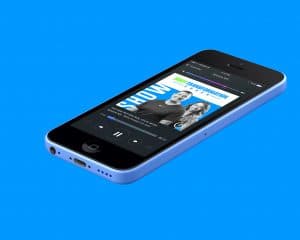How to Get Past a Weight Loss Plateau
Even the best-laid plans can falter.
Weight-loss plateaus happen to virtually everyone who is trying to lose weight. At some point, you may well find that your own progress has stalled, even if you’re continuing to exercise and eat well. The good news is, these are extremely common and are no cause for despair.
All it takes to get your body over the hurdle is the right push. It’s not just about physiology but also psychology. You may be experiencing this challenge because you have simply run out of the motivation required to reach your fitness goals.
This is also a very common experience and nothing to be ashamed of. Again, all you need is a jolt to get you going again. One of the best ways to jumpstart your fitness journey is with a fitness workout challenge.
A challenge with a strict time limit and structure, such as a 30-day challenge, is the ideal way to get things going again. The following are the very best fitness challenges to help you overcome this temporary roadblock.
30-Day Full Body Fitness Challenges
If you really need to feel the burn, then you need a full-body custom workout plan to reignite every muscle in your body.
There are many effective ways to do this, but the most popular ones involve you dedicated each day of the week to a different body part, with one day off for rest.
So Monday would be your lower body day, Tuesday your upper body, Wednesday your cross-fit, and so on.

30-Day Cleanse Challenges
One sure-fire way to get your weight loss back on track is with a 30-day cleanse. There are countless ones to choose from, from paid programs like The Clean Program and ones you can easily do yourself, such as the Master Cleanse.
If you’re on a high-protein diet or are bulking up, certain types of cleanses are best avoided until you can gradually adjust your diet. Alternatively, there are a number of high-protein cleanses which will whip you into shape.
30-Day Ab Challenges
Sometimes the most effective workout challenges are those with a visible and tangible goal at the end. Telling yourself, you want to get shredded within a month is a powerful visual motivator that will jump-start your weight loss journey in a heartbeat.
There are several highly-recommended ab challenges you can undertake without having to spend a single penny. Try the 30-day ab challenge app to start with, so you can game-if your weight loss and push yourself to the finish line.
30-Day Squat Challenges
This one is especially popular with the ladies, for a good reason. Workout routines that make you look and feel good in a rapidly short period of time are few and far between.
The simplicity and ease of most squat challenges are a key part of their appeal and a great way to build up your motivation again.
Start off with just a few squats and keep building until you’re doing hundreds a day by the end of the month.
Learn More
It takes more than fitness challenges to reach the finish line and achieve the body of your dreams. You need support, expertise, and discipline to ensure your body is the very best it can be.
If you want the support and information you need to reach the top, don’t hesitate to get in touch with us today. We’re here to get you on track – your success is our mission.
Will a Weight Loss Plateau Go Away on Its Own?
No. It’s challenging to lose much weight without some physical fitness or movement. If you’re not actively and constantly moving, losing the calories needed for weight loss becomes tough.
How Long Does It Take to Break a Weight Loss Plateau?
Studies show that weight loss plateaus happen after 7 Months of maintaining a low-calorie gameplan.
Is a Weight Loss Plateau Good?
No. It can be frustrating but keep in mind, this stage in your weight loss journey is normal. Almost everyone goes through this delay. Most important is to never give up or quit.
How Do You Speed Up Weight Loss?
Strength Training or actively moving is essential. It’s always a good idea to lift weights every day. Another important tip is to consume protein every day. Get enough sleep and don’t be afraid to gain weight. Keep in mind; fear is what attracts. Consume Fiber and Whole organic foods regularly.
Want to experience a 21-day transformation Challenge? Great! Click on the image below to learn more!

You Might also like
-
10 Quick And Healthy Low-Carb Snacks That’ll Help You Ditch The Chips
10 Quick And Healthy Low-Carb Snacks That’ll Help You Ditch The Chips
Are you addicted to carbs? Here are some healthy low-carb snacks that will make you want to break up with those cookies and chips.
You’re out and about running errands. Then, all of a sudden, hunger pangs strike!
What do you do? Perhaps your first instinct is to grab a snack for a quick energy boost, such as a candy bar, cookie, muffin, or chips. If you’re trying to lose weight and keep fit, obviously none of these snacks will cut the mustard.
Thankfully, with a little bit of forethought, you can choose low-carb snacks at the grocery store that’ll not only provide great nutritional value but also keep you on the right track health-wise.
Here are 10 best low carb snacks you can chow down when you need to keep those hunger pangs at bay.
1. Nuts
Nuts can be ideal no carb snacks. They contain healthy fat, fiber, and protein all in a single package and most are packed with nutrients.
But there two things to keep in mind when it comes to eating nuts:
- Some nuts, like cashews, actually contain a sizable amount of carbs.
- Some people find it difficult to stop when they’re eating nuts.
Make a small pot every morning and gnaw at them all day. But don’t eat too much as the carbs may soon pile up. Carefully monitor your portion sizes.
Eat lower carb nuts like almonds and macadamia. Steer clear of cashews.
2. Seeds
The most readily available seeds are pumpkin seeds and sunflower seeds. Chia seeds and flax seeds are other amazingly nutritious low carb snacks.
Almost all their carbs are in fiber form, which won’t raise your blood sugar. And, as a rule, check the number of carbs in seeds when you buy some from the convenience store.
Store seeds in the fridge. Only take out the portion you want to eat at a time. If you carry them to work, use little snack-sized zip bags.
3. Deli Meat
Any cold piece of deli meat is good to have at hand. Leftover meatballs, leftover roast meat, sausages, bacon, etc. are all easy and healthy low-carb snacks.
Be sure to pick meat with minimal processing, like bacon with no sugar or honey, ham off the bone, salami/pepperoni with at least 98% meat or fat and minimal additives, and sausages with at least 85% meat.
4. Berries
Berries are an amazing source of antioxidants and vitamin C, which helps fight disease, low immunity, and aging.
Eat fresh berries, or suck on frozen ones. You can also add some coconut cream or full-fat cream.
Buy different kinds of these low carb sweet snacks to receive all the different properties and nutrients they offer.

5. Hard-Boiled Eggs
Keep some hard-boiled eggs in your freezer. They’re a simple, convenient snack with a fair amount of fat and protein to keep your appetite under control.
Occasionally, you’ll find hard-boiled eggs at your local convenience store. They’re the ultimate snack, packed with vital vitamins, protein, and minerals. In fact, the egg white contains over half of the protein, along with vitamin C, lots of B vitamins, copper, iron, zinc, and selenium.
One big hard-boiled egg contains less than one trifling gram of carbs. Make sure to also eat the yolk as it contains all of the vitamins.
6. Raw Vegetables
Raw vegetable snack packs are becoming a pretty common sight in grocery stores.
Celery is a great choice with only a gram of carb in a 3-ounce serving. Meanwhile, three ounces of broccoli and carrot have 3 and 6 grams of carbs respectively.
You can dip your veg in peanut butter, low-fat or non-fat Greek yogurt, hummus, or low-fat cream cheese.
7. Beverages
It’s never been easier to find a low-carb drink in the grocery store.
Some great virtually carb free snacks include diet soda (0 carbs), unsweetened coffee or tea (0 carbs), unsweetened vegetable juice (11 gm), plain low-fat milk (11 gm), and coconut water (9 gm of carbs).
Another great option is plain sparkling water, which can lessen your hunger until you get back home.
8. Kale Chips
Kale is a low-carb snack, so you can munch a bit more of this delicious green without actually going too fat with calories.
It’s also nutrient-dense, and eating fewer carbs while keeping the micronutrients high is essential for your overall health.
For example, kale is loaded with B vitamins, which are crucial for converting carbs, proteins, and fats into energy. If you don’t receive enough B vitamins, your metabolism gets into sloth mode.
To make simple and quick low carb chips, drizzle kale leaves with ultra virgin olive. Add some pepper and salt to taste. Bake for 10-15 minutes at a temperature of 350 degrees.
Remember, 100 gm of kale has just 8 gm of carbs and 4 gm of plant-based protein. Enjoy!

9. Greek Yogurt
Yogurt is a breakfast favorite for many of us, but it’s also perfect for dessert. Greek yogurt is low in sugar and fat and full of protein, so long as you buy the unsweetened variety.
It’ll keep you satisfied for several hours, making it an amazing snack. You can also sweeten Greek yogurt with cinnamon and add chia seeds for extra energy, fiber, and calcium.
Greek yogurt is basically high in flavor and low in carbs.
10. Hot Dogs
You can take this snack as a last resort if you don’t find anything else to eat in the store. But make sure to chuck the bun! Regardless of the bad rap they’ve received, hot dogs are absolutely fine in a pinch, providing 2 gm of protein and just 2 gm of carbs.
Although high in cholesterol and sodium, hot dogs make for a much healthier snack than a store-bought brownie (21 gm of carbs) or a pack of potato chips if you’re trying to eat healthily and stay in shape.
Final Verdict on Low-Carb Snacks
It’s quite hard to stay healthy when your freezer is filled with chips, cookies, and donuts.
Instead of gorging on high-carb snacks that’ll pile on the pounds, give these low-carb snacks a try. You can easily make them at home or get them at your local convenience store.
Our 9-week challenge can help transform your body from the inside out as you embrace healthy snacks instead of calorie-filled chips and cookies.
Our 21 Day Body Transformation Challenge combines diet and exercise to transform your look. If you want to turn heads for the right reasons, find out more here.
-
Healthy and Happy: 20 Tips for Eating Healthy at Restaurants
Healthy and Happy: 20 Tips for Eating Healthy at Restaurants
Forget the rumors! You CAN get healthy without sacrificing your social life. The next time you’re at a restaurant, try these tips for eating healthy.
Everybody loves to eat out. In fact, 19 million people in the U.S. visited full-service restaurants in 2015. But when you’re trying to eat healthily, restaurants are taboo.
Whether you’re dining out with friends, on a romantic date, or during a business meeting, there are times you can’t avoid the dreaded restaurant!
Having an indulgent meal every now and again is no sin. But when it becomes a habit, you need to take action.
There are ways to eat delicious, healthy meals at restaurants without throwing a calorie bomb into your diet. To do it, you need a smart game plan. Read on to find out 20 tips for eating healthy.

Be Prepared
The Scout motto is “be prepared.” If you’re prepared with a game plan, you’ll be able to make your restaurant trip a success.
Check out the next five tips for finding the healthiest restaurants.
1. Do Your Homework
One of the best tips for eating healthy is to choose a restaurant in advance. Since most venues post their menus online, it’s easy to find the best ones to visit and the ones to avoid.
If they offer a lot of fatty foods on their menu that could be a temptation, skip it and go somewhere else. Search for healthy food restaurants on Google, and you might find some health-oriented places to eat.
When you’re looking for healthy dishes at restaurants, many ethnic food eateries are a great option. For instance, Japanese, Thai, Greek, or Indian. It’s a lot easier to eat clean at one of these venues compared to an Italian or Mexican restaurant.
2. The Right Vibe
Picking healthy dishes at restaurants isn’t enough. You also have to choose a place with the right atmosphere.
Listen to the music. Restaurants that have loud hectic music make you eat to the beat. If the music is softer and slower, you’ll spend more time at the table, but eat less.
The same applies to color. Restaurant decor can either stimulate you to eat more or calm your mind so you can have a relaxed experience.
For instance, the colors red, orange, and yellow will spur you to order more. Soft blue, gray, and peach, on the other hand, will create a relaxed ambiance.
3. Book in Advance
When you’re waiting for a table at a restaurant, you’ll only get hungrier and hungrier. When you finally sit down, you’ll devour all the table bread and give up on your diet for the night.
The solution is simple. Book healthy restaurants in advance – and you won’t have time to get hungry.
4. Be Wise in Your Seat Choice
When choosing where to sit in a restaurant, most people avoid the area around the bathroom. But an even more dangerous place to sit is near the kitchen.
It’s one thing to see the lip-smacking descriptions on the menu. But to see them coming out from the kitchen and smell the delicious aromas is way too much of a temptation, especially when you’re hungry.
Another tip is to choose a seat near or opposite a mirror. It might sound strange, but it’s backed up by research. Scientists have found that if you watch yourself in a mirror while eating unhealthy foods, they seem less tasty.
5. Eyes Too Big for Your Belly
According to research, people are bad at estimating how much a portion size should be. This means that on any given day, we’re probably eating more than we should.
So, whatever you do, avoid all you can eat restaurants. It’s way too tempting. Plus, these restaurants often have a no waste policy – if you’ve put it on your plate, you must eat it.
If a buffet is the only option, try using a smaller plate. Or fill half of a normal sized plate with veggies before you start snacking on goodies.

You Are What You Eat
You’ve found a healthy restaurant, now it’s time to choose your meal. This is the toughest part. But you can do it if you follow these tips.
6. Know Your Menu
Do your homework and take a peek at the menu before you go. Pre-planning your meal will make life a lot easier for you and help you to avoid temptation.
Restaurants sugar coat the words in their menu so that you don’t know exactly what you’re getting. But once you’ve got down with the lingo, you’ll be able to figure out what menu options to avoid.
For instance, anything that is Alfredo, creamed, buttery, or scalloped. Also, anything smothered, pan-fried, crispy, breaded or dipped is a big no-no.
The same applies to meats. Some cuts of meat are fattier than others. Skinless chicken breast, for example, is leaner than chicken thighs or legs.
Healthy dishes at restaurants feature compelling descriptions, such as grilled, baked, steamed, or roasted. Also, anything braised, seared, or broiled is good. These are the healthy keywords to look out for.
7. Watch Out for “Healthy” Labels
When browsing the menu, you’ll see dietary labels like paleo, sugar-free, or gluten-free. You might assume that these would make the meal a healthy choice, but that’s not always the case.
To make the food tasty, restaurants often add hidden added sugars and fats. For instance, if you eat a vegan cake, you may think it’s healthier. But they usually swap the eggs for a ton of oil, which is anything but healthy.
8. Meats and Fish
When choosing healthy dishes at restaurants, you don’t have to opt for a simple salad. Meat and fish will help you feel satisfied without filling up on carbs.
Lean meats, such as flank steak or chicken breast, are full of protein. Fish is also a healthy option as long as it’s not fried. It’s harder to overeat proteins than it is to overindulge in carbs.
9. Load Up with a Salad
Salads can be one of the most healthy dishes at restaurants. But there are sometimes hidden calories. For instance, nuts, croutons, cheese, dried fruit, grains, and fancy salad dressing can add hundreds of salads to your meal.
Don’t force yourself to only eat lettuce as you’ll be hungry again in half an hour. Make sure you’re getting some protein in your salad.
10. Double Trouble
The veggie portions in most meals are often very small. So when you order, ask for double vegetables.
If you want to add a little extra zest to your meal, why not ask for a fruit side? Superfoods like blueberries, strawberries, and raspberries can add some zing to your meal without a lot of extra sugar.
11. Don’t Be Shy
Don’t be shy to ask your waiter about the preparation of the food. If you find it out that it’s cooked with a lot of butter and salt, ask for them to prepare it without.
You might feel embarrassed asking, but that’s what your waiter is there for. Ask them what any unfamiliar words mean or ask their opinion on what the healthiest thing on the menu is. They may be able to make some great suggestions.
12. Sharing Is Caring
A sneaky way to keep portions realistic is to split your dish with a friend. This may give you the chance to try a little bit of everything without overdoing it.
You could even order a couple of appetizers as a main meal.
13. Get Saucy
Even if you order a healthy looking menu option, they may smother it with sauces and butter. It may end up being just as unhealthy as that double trouble cheeseburger you had your eye on.
Ask them to prepare your food without the butter and dressings, but to have them as a side instead.
Instead of dousing your meal with the sauce, try the fork-dip method. Dip your fork into the creamy side, then load it up with veggies. This way, you can get the taste without overindulging.
14. Skip Empty Calories
You may have ordered the healthiest dish in the restaurant, but it won’t matter if you stuff yourself with bread before the meal arrives. If it’s too tempting, ask the waiter to take it away.
Another empty calorie culprit is sweet alcoholic drinks or sodas. Avoid cocktails at all costs. They will load you up with sugar, use up all your calories, and you’ll still feel hungry afterward.
If you need an alcoholic drink, opt for a vodka and tonic or a glass of wine instead.
15. The Proof Is in the Pudding
Deserts are a no-no! Even a small piece of cake can add 400 calories or more to your meticulously planned meal. Just say no, kids!
If you have a sweet tooth, why not try sharing a dessert instead? Ask for some fruit, such as berries. Or grab some frozen yogurt on the way home as a low-calorie option.

Let’s Eat!
Now you’ve picked the right healthy food restaurant with the perfect ambiance, and you’ve chosen the healthiest item on the menu. What next?
The next part is the eating! Don’t let this final hurdle trip you up. Follow the next five tips.
16. Box It Up
Up to 94 percent of restaurant meals contain 600 calories or more. That’s because even if the meal is “healthy,” the portion is way too big.
Instead of asking them to box up the leftovers, try asking them to box up half the meal before you even begin. This will keep you from overeating. It will also save you money as you can eat it for your dinner the next day.
It might look a little odd to others, but it’s a smart move for eating healthy at restaurants.
17. Keep Calm, Drink Water
Drinking water can help control your eating and ward off hunger.
This habit makes it easier for you to slow down during a meal. You’ll not only enjoy the food more, but it’ll give your stomach the chance to tell your brain it’s full before you overeat.
Some struggle with the bland taste of water, especially if they’ve got used to drinking alcohol or sugary drinks. Ask for a slice of lemon or lime to improve the taste.
18. Slow Down There
Once you’ve got your plate in front of you, it can be tempting to gobble it down. But eating quickly leads to overeating. This is because your stomach doesn’t have the chance to tell you it’s full.
Try putting down your utensils between each bite. This will give you the chance to savor each mouthful. It will also help gauge your hunger levels before you stuff yourself.
19. Don’t Compare
Keep your eyes on your own meal. Don’t compare what you’ve ordered with your friend’s dinner. We all have different nutritional needs – comparing won’t help anyone.
It’s also handy to have this mindset before ordering. Try to be the first to order. This will stop you from having an “Oh, that sounds delicious, I’ll have the same” moment.
20. A Happy Ending
When you’re finished your meal, pop a mint into your mouth. The mint will help clear your palette. This will discourage you from taking any more sneaky bites of your meal or anyone else’s leftovers.
If what’s left on your plate is tempting even after you’re full, try one of these tricks. Use a napkin to cover the alluring leftovers. Or drown it in salt so that it becomes inedible.
Plan to finish off the night with light activity, such as an evening stroll or a little dancing. You’ll not feel like ordering something too heavy as it will make you feel sluggish for your activity.
Tips for Eating Healthy and More
If you follow these tips for eating healthy, you can enjoy your restaurant experience without the guilt trip afterward.
Of course, you should try to eat healthy foods at all times. And diet goes hand in hand with an exercise regime.
Our 21 Day Body Transformation Challenge combines diet and exercise to transform your look. If you want to turn heads for the right reasons, find out more here.

-
10 Workout Motivation Tips to Avoid Fitness Fatigue
10 Workout Motivation Tips to Avoid Fitness Fatigue
Everyone starts working out with a lot of dedication. Unfortunately it can fade fast. These are our best tips for workout motivation to meet your goals.
Working out isn’t something you can do every once in a while or whenever you feel like it if you really want to see results. It requires you to show up every single day. You have to be dedicated to your workout routine, learn how to create healthy eating habits, and start taking better care of yourself as a whole.
That’s when the physical and mental transformations begin to happen.
However, it is common for people to experience some ups and downs on their fitness journey – like struggling to find workout motivation or stick to their diet. Everyone goes through these things at one point or another, but it’s on each person in the gym to push past them.
If you’ve been having a serious lack of motivation to get in the gym and work toward your goals, use these tips to build your drive back up.
1. Put on Your Workout Clothes
This is the simplest thing you can do to get your mind into workout mode. Putting on your workout clothes doesn’t mean that you have to go to the gym right away, but it does help significantly in making sure you show up.
If you seriously don’t feel like going to the gym today, try this trick. Grab your favorite workout outfit, put it on, and see how you feel once you look in the mirror or even in the next hour or so. You’ll be surprised how much of a difference this little trick makes.
2. Try Different Kinds of Workouts
Maybe the issue with your workout motivation right now isn’t that you’re not showing up to the gym, but that you can’t wait to leave once you’re there. Maybe you’re bored with your workouts or feel like they’ve plateaued.
The quick fix for this is to switch up your routine.
Try out different kinds of workouts until you find what engages you the most. For some people, there’s no better way to do cardio than to take a spin or Zumba class. For others, lifting becomes a lot more fun in a CrossFit gym or some other group setting
Keep in mind you don’t have to do one single kind of workout, either. It’s possible to do yoga on Monday, lift on Tuesday, then run on Wednesday and still reach your goals!
3. Stop Comparing Yourself to Others
No matter where you are or what you’re doing to exercise, remember that you’re there to work on you. This means you have to focus on what your body needs to do to get a good pump and stop paying attention to what other people are doing.
You won’t be as buff as the strongest person in the gym right away and you’re not going to be as fast or as slim as them, either. More so, you have to keep in mind that they were once in your shoes as the newbie to working out and being fit.
Work on putting all your energy into your fitness journey instead of others’. This will do wonders to motivate you to keep going and work harder than you have in a while.

4. Stay Hydrated All Day Long
Comparing yourself to others is a mind game that does you no good. But, there could be a physical reason why you’re not feeling motivated to workout – like the fact that you’re dehydrated.
Water plays a significant role in every single thing your body does. It affects your mental focus, energy levels, digestion, and how well you rest, too.
If the body can’t perform such functions like its supposed to, it’s definitely not going to feel up for the challenge of working out. When you drink a good amount of water throughout the day, though, you increase your chances of getting it done!
5. Focus on That “Pumped Up” Feeling
Speaking of getting it done, take a moment to think about how amazing you feel when you finish a workout. There’s nothing that can match that sense of accomplishment when you walk out of the gym super sweaty or with your muscles shaking a bit.
Not to mention, the build-up of your pump and reaching that sense of accomplishment is also pretty cool. There’s something special about walking into the gym with low energy and walking out feeling like you can take on anything – especially if you’re making progress in how heavy you’re lifting or how much endurance your body has as a whole.
6. Take Advantage of Your Rest Days
Here’s something else to consider: maybe your motivation to go to the gym hasn’t disappeared, maybe it has completely run out (for now).
That’s what happens when you overwork your body and push yourself too hard. There’s a big difference between being dedicated and showing up, and not knowing how to listen to what your body is telling you.
You need to have a rest day.
Even if it’s an active rest day, you have to be able to let your body relax. This is the precious time that your muscles need to rebuild themselves after working so hard in the gym. It’s also your chance to do something with your time other than working out that benefits you in a different way.
7. Reward Yourself with Cheat Meals
One of the best things about rest days is that this is usually when people have their cheat meals. Cheat meals help you curb cravings and stick to your long-term goals. They’re also a great reward to give yourself after crushing your workouts, and they serve as a nice boost of motivation as cheat day gets closer and closer.
Keep in mind that there’s a difference between enjoying one well-deserved cheat meal and going completely off the rails, though. You risk guilting yourself and losing even more motivation to workout if you take cheat day too far. But, enjoying it mindfully offers many benefits.

8. Remember Why You Started
Another way to find the workout motivation you need is to take a look at the goals you’ve written down. Keep these at the front of your mind as you do every single rep, when you sit down to eat, and as you go about the rest of your day.
Whether you’re trying to grow 10 pounds of muscle or lose 20 pounds of fat, you have to remember why you started. This is the motivation you need when you’re thinking about skipping your last set or when you’re trying to cheat your reps. It’s what makes you show up at the gym in the first place and reminds you to work hard while you’re there.
9. Change Your Perspective
As smart as it is to remember why you started, you may discover there’s a deeper issue at play if you’re having to find workout motivation every single day. Working out really shouldn’t be a chore; it should be something that you genuinely want to do instead of a task that you feel obligated to complete.
If this isn’t the mindset you have right now, it’s time to change your perspective. Take a step back for a second and try to identify what it is about working out that you don’t like. Figure out the barriers you’ve created in your mind, then work past them.
Find ways to improve your relationship with working out. Do workouts that are more enjoyable to you or at least try not to be so hard on yourself.
10. Have Someone Hold You Accountable
The final way to boost your workout motivation is to have someone do it for you. Not to say that you should rely on them, but rather, commit to showing up for them as well as for yourself.
Get a gym partner to hold you accountable when you’re trying to skip out of a workout, or even better, hire a personal trainer! This is someone you can lean on when you’re really not feeling your workout for the day.
But, you’re still the one who has to put in the work.
That work does become a lot easier to do when you have someone making sure you show up and lifting you up throughout the workout. They’re there to offer you support, call you out when you’re cheating yourself, and remind you of the inner strength you have to keep going.
How to Get the Most of Your Workout Motivation
You can have all the workout motivation in the world and still struggle to get the results you’re looking for. That’s because you have to know how to train your body once you actually get into the gym.
This takes a little time to figure out. You have to be patient as you learn how to build a mind-muscle connection and create routines that best target each muscle group, not to mention understand which supplements to take and when.
Thankfully, you don’t have to take all of this alone! That’s what we’re here for.
Our 21 Day Body Transformation Challenge combines diet and exercise to transform your look. If you want to turn heads for the right reasons, find out more here.





Recent Comments